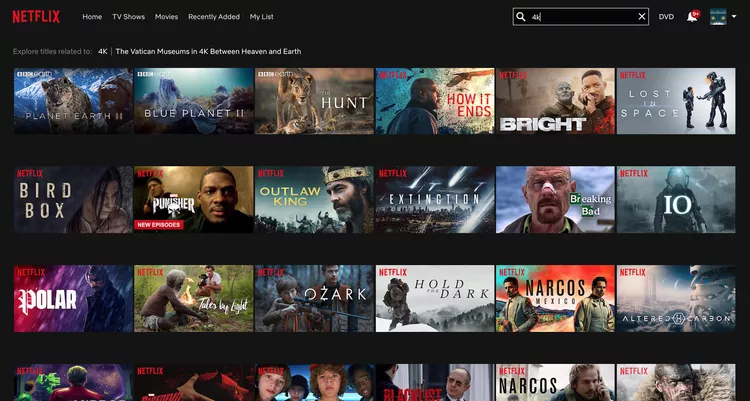Not too long ago, watching your favorite TV show meant racing home before the clock struck eight, fumbling for the remote, and hoping the reception on your television antenna wasn’t ruined by bad weather. Missing an episode meant waiting for a rerun — if it ever came at all. Films were bound to the cinema schedule, and the idea of watching anything you wanted, anytime, anywhere, felt like the stuff of science fiction.
Then, quietly at first, the digital revolution crept into our living rooms. Broadband internet replaced dial-up. DVDs began to feel quaint. Suddenly, you could click on a movie and watch it instantly without a disc or a TV broadcast. The arrival of streaming services wasn’t just a technological upgrade — it was a cultural shift, one that fundamentally changed how we consume stories, music, and live events.
Today, platforms like Netflix, Hulu, Disney+, Amazon Prime Video, and dozens more have become part of the fabric of modern life. They’re not just about entertainment — they’re about choice, personalization, and even identity. We don’t just “watch TV” anymore; we “stream,” and that difference is more profound than it might appear.
The Rise of Netflix and the Blueprint for the Industry
When Netflix was founded in 1997 by Reed Hastings and Marc Randolph, it wasn’t the streaming giant we know today. Its original model was humble: mailing DVDs to customers. It was faster than a trip to the video store, but still tied to physical media. The real turning point came in 2007, when Netflix introduced a streaming option that allowed subscribers to instantly watch a selection of titles online.
This innovation changed everything. No late fees. No scratched discs. No driving to a store. Suddenly, “on-demand” wasn’t just a buzzword — it was a lifestyle. Netflix also noticed something crucial: people didn’t just want to watch one movie and stop; they wanted to keep going. The term “binge-watching” entered our vocabulary, describing those marathon sessions where “just one more episode” turns into finishing an entire season in a weekend.
Netflix’s early success wasn’t just about technology; it was about understanding human behavior. It embraced algorithms to recommend shows and movies based on what you’d already watched, creating a feeling of a personal connection between viewer and platform. And when Netflix moved into producing its own content, starting with House of Cards in 2013, it transformed from a distributor into a creator — one with global reach and the ability to challenge traditional Hollywood studios.
Hulu’s Different Approach
While Netflix was casting its net worldwide, Hulu took a different path. Launched in 2008 as a joint venture between major U.S. media companies, Hulu positioned itself as the go-to place for current TV. While Netflix was great for catching up on full seasons or old favorites, Hulu offered something different: episodes available just a day after they aired on network television.
For viewers who still liked the rhythm of weekly releases but wanted the flexibility of streaming, Hulu was a perfect middle ground. It blended the immediacy of broadcast TV with the convenience of the internet. Over time, Hulu expanded its catalog to include original programming like The Handmaid’s Tale, which became a critical and cultural phenomenon.
The service also experimented with live TV streaming, offering packages that combined on-demand libraries with real-time channels — a move that blurred the lines between “cable” and “streaming” even further.
The Explosion of Choices
Once Netflix and Hulu proved the model, the floodgates opened. Every major media company wanted in on the streaming gold rush. Disney+ entered the scene with its vault of beloved classics, Marvel blockbusters, Star Wars sagas, and Pixar gems. Amazon Prime Video became part of a larger membership ecosystem, giving viewers movies and shows alongside free shipping and other perks. HBO Max brought prestige television like Game of Thrones and Succession to the streaming world, along with blockbuster films released the same day they hit theaters.
The result? Consumers were suddenly faced with more choices than ever before. The streaming market became a crowded, competitive space where each platform fought for your time, attention, and subscription dollars. Exclusive content deals became the new battleground — if you wanted to watch The Mandalorian, you had to have Disney+. If you wanted Stranger Things, you needed Netflix.
This exclusivity created what some call “subscription fatigue,” where keeping up with all your favorite shows could mean juggling five or more monthly bills.
How Streaming Changed Storytelling
The streaming revolution didn’t just change how we watch — it changed what we watch. Freed from traditional broadcast schedules, creators could tell stories in new ways. Episodes didn’t have to fit exact time slots, and entire seasons could drop at once. This allowed for more complex narratives, richer character development, and experiments in pacing that would have been impossible under the old network model.
For example, Netflix’s Stranger Things could lean into its retro, cinematic style without worrying about commercial breaks. Hulu’s The Handmaid’s Tale could embrace slower, more atmospheric storytelling because viewers could choose to watch at their own pace.
Streaming also opened the door for niche genres and international content. Korean dramas, Spanish thrillers like Money Heist, and Japanese anime gained global audiences overnight. A viewer in New York could discover a show from Brazil, fall in love with it, and join a fandom that spanned continents.
The Economics of Streaming
Behind the glossy interface of your favorite streaming app lies a complex economic ecosystem. Streaming companies spend billions acquiring content, producing originals, and marketing their platforms. Subscription fees cover some of these costs, but competition pushes services to constantly reinvest in more shows, movies, and technology.
This has led to an arms race for talent and intellectual property. The bidding wars for hit shows, popular book adaptations, and star-studded productions can reach staggering sums. Streaming companies also face the challenge of “churn” — the rate at which subscribers cancel after finishing the shows they signed up for.
To combat this, services release new content strategically, ensuring there’s always something fresh to keep you hooked. Some platforms have returned to weekly releases for certain shows, recognizing that slow-burn engagement can keep audiences subscribed longer.
Streaming and Culture
The influence of streaming on culture is undeniable. Entire weekends are built around binge-releasing seasons of popular shows. Social media buzz can make or break a series, with memes, reaction videos, and fan theories fueling engagement. The ability to watch whenever and wherever you want has also made it easier for people to connect over shared viewing experiences, even across time zones and continents.
But streaming has also changed the watercooler conversation. In the era of weekly TV, everyone watched at the same pace. Now, some viewers devour a season in a day while others take weeks, creating spoiler minefields online. The way we talk about and experience media is less synchronized — yet more personalized.
The Globalization of Entertainment
One of the most profound impacts of streaming is the globalization of entertainment. A decade ago, a foreign-language TV show might never reach audiences outside its home country. Today, a South Korean survival drama like Squid Game can become the most-watched show in Netflix history, captivating viewers from Seoul to San Francisco.
Streaming platforms are investing heavily in local productions worldwide, understanding that audiences want stories that reflect their own cultures as well as those from abroad. This cross-pollination is enriching the entertainment landscape, making it more diverse, inclusive, and interconnected than ever before.
The Future of Streaming
As technology evolves, streaming is poised to become even more integrated into our daily lives. Advancements in artificial intelligence will make recommendations more precise, while interactive storytelling — where viewers can influence the plot — will blur the line between passive watching and active participation.
We may see more bundling of services, where companies offer discounted packages that combine multiple platforms. Virtual reality and augmented reality could turn shows into immersive experiences. And as 5G and faster internet become universal, high-quality streaming will be accessible to even more people around the globe.
Yet challenges remain. The market is reaching a saturation point, and not every service will survive. Some may merge, while others will pivot to niche audiences. Content piracy, data privacy concerns, and the environmental impact of massive data centers are all issues the industry will need to address.
What It Means for You
At its heart, streaming is about empowerment. It’s about putting the viewer in control — of what to watch, when to watch it, and on what device. It means your entertainment is no longer dictated by TV schedules or movie theater showtimes.
But that empowerment comes with choices. Deciding which services to subscribe to depends on your tastes, budget, and habits. Are you a cinephile who wants the latest blockbusters? A documentary lover? A fan of prestige TV? Or do you want access to everything, even if it means juggling multiple subscriptions?
Streaming has transformed our relationship with stories. It has made them more accessible, more diverse, and more immediate. It has turned the living room into a global stage and the viewer into both critic and curator.
As we look ahead, one thing is certain: the streaming revolution isn’t just a phase. It’s the new normal — and it’s still evolving.






